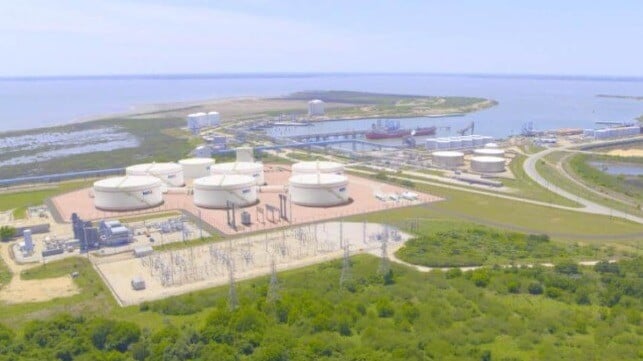USACE Restarts Environmental Review for Oil Port's Access Channel

The U.S. Army Corps of Engineers is withdrawing its final environmental impact statement for a project to expand the Matagorda Ship Channel, the access waterway for the small seaport of Port Calhoun, Texas. The decision is a new setback for the port's plan to add a large-scale crude export complex between the oil megaports of Corpus Christi and Houston.
If completed, the dredging project would deepen the channel to 47 feet, enough for a Suezmax tanker. This would enable development of a 600,000 barrel per day export terminal at Port Calhoun, sponsored by terminal operator Max Midstream. In the process, dredging would remove and relocate about 20 million cubic yards of sediment from the bottom of the bay.
The Corps signed off on a final EIS for the project in 2020, but the work was delayed by an environmental lawsuit. Together with local groups, environmental-law advocacy organization Earthjustice sued the USACE, alleging that the project would stir up mercury in the sediment from a Superfund site. Nearby Lavaca Bay was a dumping ground for wastewater from a chlor-alkali plant in the 1960s, and the sediment around the discharge site contains mercury. An independent review completed by researchers at Texas A&M-Corpus Christi recommended conducting a new round of sampling to determine current levels of the toxic substance in the sediment, since the last survey on record was carried out 20 years ago.
“Our fishing community will not stand by and let this toxic dredging project upend decades of hard work to bury industrial waste dumped in the bay,” said Diane Wilson, a fourth-generation shrimper and executive director of San Antonio Estuarine Bay Waterkeeper.
The lawsuit pushed the start of bidding for dredging contracts back to late 2023, and the Corps' decision to reopen the EIS process will likely extend that timeline further. In a court filing Tuesday, the Corps said that it had found a discrepancy in its paperwork in the amount of material that would be dredged up during the project. It now plans to prepare a supplemental EIS before making a final ruling.
Judge Amit P. Mehta has ordered the parties to submit a status report on whether there is still a basis for a lawsuit, since the Corps has withdrawn its record of decision for the EIS.
In the meantime, proposals for far larger crude export projects are under way. Multiple developers have proposed to build single-point mooring buoy terminals for VLCCs off the coast of Texas, where there is enough water for the largest class of tankers. One of these projects, Enterprise Product Partners' Sea Port Oil Terminal, just became the first of its kind to earn approval from the Maritime Administration.
